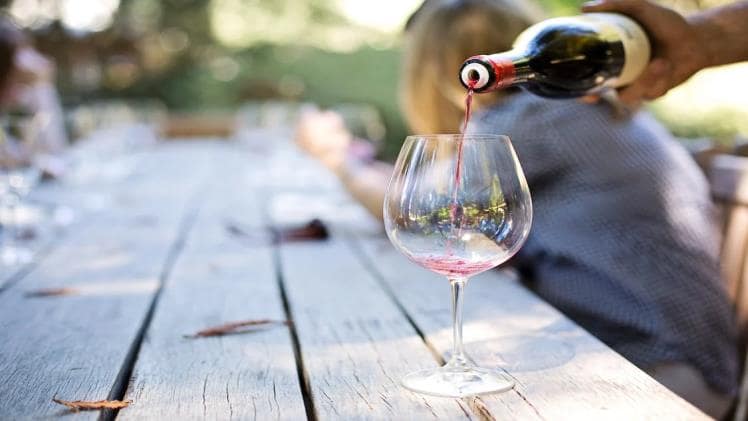For health reasons, many switch to dealcoholized or nonalcoholic wines. You can upgrade your regular wine by getting yourself a healthier version of it! But is there a difference? This is something many want to know.
What exactly is the difference between regular wine and dealcoholized wine? Other than the alcohol content, there are a few other differences in taste, preservation, and the process, which assures you you’re not just getting fancy grape juice.
We’ve got you covered! To know more about their significant differences, keep on reading!
Differentiating Important Terms: Nonalcoholic, and Dealcoholized
Nonalcoholic
The wine that contains minimal to no alcohol is what is known as nonalcoholic or alcohol-free wine. This word describes beverages with less than 0.5% alcohol by volume (ABV).
Dealcoholized
Many people are surprised to learn that dealcoholized wine is created from wine. Many believe that dealcoholized wine is made from grape juice, but it begins life as wine, replete with alcohol.
These beverages also have less than 0.5% alcohol by volume. Winemakers choose their grapes, brew wine, and then remove the alcohol.
Regular Wine And Nonalcoholic Wine: What’s The Difference?
Other than the health benefits of dealcoholized wine, which is still similar to alcoholic wine, just minus the drawbacks of alcohol. Many want to know the other differences that dealcoholized wine has with regular wine.
Alcohol Content
The amount of alcohol in wine has significantly increased recently, say specialists. The alcohol by volume (ABV) of wine can span anywhere from 5% to 23%. Wine has a 12% alcohol level on average.
The quantity depends on the type of wine being made alongside the winemaker’s preferred ABV. Due to the location of the vineyard and winery, some wine’s alcohol concentration from the same family may even vary.
Generally speaking, the ABV of red wines is between 12% and 15%, with an average of 13.5%.
On the other hand, white wine ranges from around 5% to 14% and has an average alcohol concentration of 10% ABV.
Rose wine, in between red and white wine, has an average alcohol content of 12% ABV.
Taste
Though the flavor changes depending on factors including the wine’s color, the grape it was produced from, and the price point of the bottle, it may be defined as a combination of sweet, sour, bitter, and even spicy ingredients.
On the other hand, nonalcoholic wine would be collectively classified as wine-like alternative beverages. Many are especially sweet. The sweeter wines frequently featured flavors reminiscent of fruit cocktails, candied fruit, or even daiquiris.
Since alcohol evaporates during the aroma-transporting process of wine, some scents are inevitably lost when the alcohol is eliminated.
Several natural flavorings are added by some companies, including Waterbrook, who openly declare they do so to compensate for the flavor lost when alcohol is eliminated.
By removing the alcohol in the beverage, the flavors and weight attributed to the alcohol are also lost.
Good alcohol-free wines should taste highly close to alcoholic wine since authentic alcohol-free wine goes through the entire vinification process. Alcohol-free wines will only taste like sweet grape juice without a yeast fermentation and maturing process.
Expiration Date
Wine that is not alcoholic can go wrong. Since alcohol, a natural preservative in wine, has been removed, alcohol-free wine doesn’t last as long as wine that contains alcohol. Nonalcoholic wine cannot thus last a long time.
So, after opening a bottle of nonalcoholic wine, you should drink it all. Reseal and put it in the fridge if you can’t finish it now and must save it. If you want to savor the freshness, make sure to drink the wine within the preceding two to three days.
It’s a common misconception that regular wine holds forever. However, this is untrue.
If you store your wine carefully and keep the bottles out of the light, you may enjoy your unopened vintage for years to come. Unopened wine ages when kept in storage. If your wine is of excellent quality, you may store it carefully and keep it in your pantry or basement for many years.
However, if the wine is ordinary or relatively cheap, it shouldn’t be kept for too long; it’s best to drink it in a year or two.
Wine stops aging, begins to spoil if the cork becomes damaged, and begins to admit air into the bottle. It will eventually expire.
Process Of Dealcoholizing Wine
Traditional wine with alcohol goes through the same stages as nonalcoholic wine, except that alcohol is taken out of the wine during the final production stage.
Other drinks that claim to be nonalcoholic wine but never go through the vinification process or have yeast added to them for the production of the alcohol found in traditional wine and nonalcoholic wine are not nonalcoholic wine.
Winemakers can use three different methods to remove the alcohol content from the wine. These methods are vacuum distillation, reverse osmosis, and spinning cone column.
Vacuum Distillation
With this technique, the heat evaporates most of the wine’s alcohol, leaving only small amounts behind.
The alcohol is eliminated while preserving the natural wine flavor by keeping the heat as high as it can be without causing the wine to burn or boil.
Reverse Osmosis
In reverse osmosis, at a pressure higher than the osmotic pressure, the wine is pushed against a membrane.
This causes smaller-molecular-weight substances like ethanol and water to diffuse through the membrane in a targeted manner and removes the alcohol from the wine.
To make a pleasant nonalcoholic or low-alcoholic wine, the concentrated wine is diluted with water to restore the original balance of these components.
Spinning Cone Column
Many American winemakers favor spinning cone technology to retain more of the aromas of premium wine. This process involves running the wine twice through a centrifuge with rotating and stationary cones.
The spinning cones force thins out the wine and remove any substances that are too volatile to remain after the first pass.
The second time through the cones is when dealcoholization takes place. The chemicals removed in the first pass are then reintroduced to the wine to return it to its original form as precisely as feasible.
Conclusion
To sum it up, here are the essential differences between regular and dealcoholized wine.
First, let’s clarify a few terms. Nonalcoholic and dealcoholized are often interchanged in usage.
However, Nonalcoholic means beverages with 0.5% alcohol. Dealcoholized, on the other hand, is a type of nonalcoholic drink. It is less than 0.5% and underwent a process where the alcohol content was removed from the glass.
As for the difference between regular wine and dealcoholized wine, the alcohol content is the most prominent. At the same time, everyday wine can have an ABV spanning from 5% – 23%. Dealcoholized wine only has 0.5%.
Due to the removal of the alcohol, the taste may also be different between the two. Nonalcoholic wine is notably sweeter.
Dealcoholized wine also doesn’t last nearly as long as regular wine because it is the alcohol content that preserves it.
There are three methods to dealcoholize wine. Any of the three can be used by the wineries. These techniques are vacuum distillation, reverse osmosis, and spinning cone columns. Please read more details about them above.
Looking for some quality wines? Visit Crybaby wines and find great wines here.

